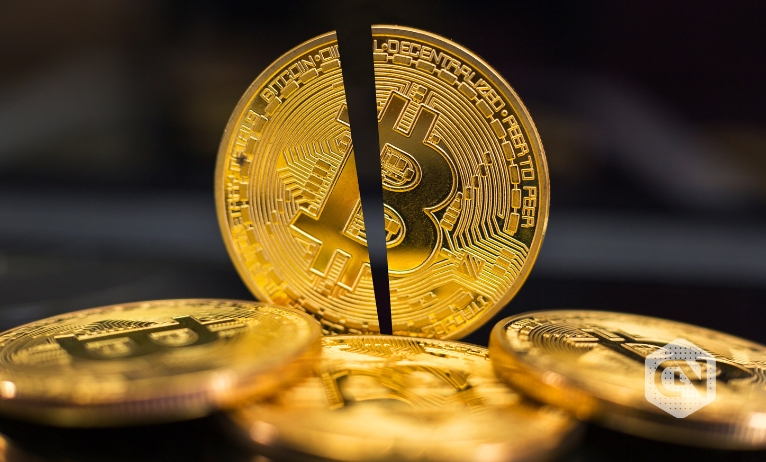Bitcoin Halving is one of the most pivotal events when block rewards for mining are reduced in half. The event takes place every four years, which started in 2012, and the last event took place in 2020 when block rewards were reduced to 6.25 for every block successfully made. The next Bitcoin Halving event is expected to take place in April 2024, with block rewards further reducing to 3.125.
In this article, we will explore the Bitcoin Halving events, present a historical analysis, and the potential price trajectories and the impacts of the halving event on the Bitcoin market.
Understanding Bitcoin Halving
Bitcoin halving is an event or condition occurring within the Bitcoin network protocol requiring the BTC block rewards to be reduced in half after every 210,000 blocks. Bitcoin halving is undeniably the most vital event in the crypto world. Hence, whether the investors are novices or seasoned, it is essential to understand the significance of Bitcoin halving and how it impacts the crypto market.
Bitcoin halving involves reducing block rewards that occur automatically after a certain range of blocks has been mined. The last Bitcoin halving event occurred in May 2020; the next event will likely occur in April 2024. The main objective of the halving event is to reduce the number of new tokens entering the blockchain network. However, the halving event involves certain risks, and miners may feel less incentivized to mine BTC tokens.
Historical Analysis of Bitcoin Halving
By the end of 2012, Bitcoin witnessed its first halving, an event that dropped its lock from 50 BTC to 25 BTC. After four years, the second half of an event took place, reducing the block reward from 25 BTC to 12.5 BTC. The recent Bitcoin halving in 2020 reduced the bitcoin block reward from 12.5 BTC to 6.25 BTC per block.
People generally expect a price increase of Bitcoin tokens during or around the halving event; however, such price movements are not guaranteed. The expectation for a rise in Bitcoin prices is linked with the market demand and supply theory. When it opens, the price increases when there is limited supply and decreases when there is surplus supply.
A lower supply may increase prices since only a few Bitcoin tokens enter circulation. However, other factors influence BTC price development. They are equally notable, such as the Ukraine war, global events like the COVID-19 pandemic, and even opinions regarding the environmental effects of sustainability and crypto mining operations. Historically, Bitcoin events positively affected the price of the crypto market. For instance, considering the 2012 Bitcoin halving event, the value of 1 BTC increased by 1320% following the event.
Additionally, a year after, the next Bitcoin halving in 2016 saw an increase in Bitcoin price by almost 84%. This has made the community anticipate a price rise due to past scenarios and the subsequent scarcity of Bitcoin tokens. However, there is no guarantee, and investors can only speculate on this trend ahead.
Potential Price Trajectory and Impact of Halving on BTC
The upcoming BTC halving event that may take place in April 2024 will reduce block rewards for miners to 3.125 BTC. Miners may start concluding Bitcoin mining as less significant as the block rewards become further halved, considering the rising hardware upkeep and electricity costs.
The market may become more decentralized since Bitcoin miners will not earn sufficiently through new BTC tokens to compensate for their current costs. The overall Bitcoin hash rate may reduce as Bitcoin miners close their farms or move to other POW cryptocurrencies with similar consensus mechanisms and algorithms to BTC. However, the speed of Bitcoin distribution within the ecosystem and block mining will not be affected since the program is designed to modify and adjust the difficulty of verifying Bitcoin transactions and maintaining a stable amount.
Analysts and experts are optimistic about the potential of Bitcoin to embrace a bullish run next year while projecting a sustained uptrend in BTC value. Based on our Bitcoin Forecast, the average price of Bitcoin would be around $604,448.78 in 2024, with a minimum and maximum trading level of $50,998.60 and $77,898.96 for the whole year.
According to Changelly, Bitcoin may be trading at an average price of $603,124.54 in 2024 with a minimum and maximum price of $61,074.91 and $70,259.36. CoinCodex forecasts Bitcoin prices to fluctuate between a yearly low and a yearly high of $29,564 and $109,364 in 2024.
Conclusion
The next Bitcoin Halving will likely occur in April 2024, but it is challenging to predict the exact event date as it depends on the Bitcoin block height. However, since offering events happen every 210,000 blocks, the next event may occur in 2024 with a block height of 840,000.
Based on what investors have seen historically, there is a positive sentiment surrounding the Bitcoin Halving event. The past Bitcoin halving events have been associated with price fluctuations reaching skyrocketed values, and investors are anticipating the same post-halving rally.
However, while historical patterns are only suggestions, investors must note that the trend is not guaranteed, and no expert can predict future BTC price movements with 100% assurance. Price trends depend on other circumstances that may take place in 2024, including growing adoption, global occurrences, and other factors that influence Bitcoin’s demand.

